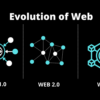Historically, grid operators have provided the physical infrastructure to enhance electrical power usage and relieve reliance on carbon energy consumption.
From Greenwashing to Green Proofs
Actions speak louder than words, especially when it comes to climate change. In this decisive decade, companies need to back up their decarbonization pledges with verifiable data. Without concrete proof, ESG reporting and sustainability claims become empty promises at best and outright misleading at worst.
From electricity, to fuels, to commodities like steel, to carbon sequestration, there are solutions in nearly every industry enabling organizations of all shapes and sizes to profitably reduce their carbon footprint.
However, verifying the impact of these solutions remains a challenge. Accounting systems across industries are fragmented, and verification processes are opaque.
What is Energy Web Chain?
In mid-2019, EW launched the Energy Web Chain, the world’s first enterprise-grade, public, open-source blockchain platform tailored to the sector’s regulatory, operational, and market needs. Energy Web is a member-driven nonprofit accelerating a low-carbon, customer-centric electricity system by unleashing the potential of blockchain and decentralized technologies.
The Energy Web Chain (EW Chain) aims to provide the digital infrastructure that connects the grid operators, customers, and physical assets (like solar panels, thermostats and electric vehicles.)
Central to running the EW Chain is the Energy Web Decentralized Operating System (EW-DOS), a stack of technologies designed to connect participants within the energy market to increase grid flexibility.
Granular, accurate carbon accounting to be embedded into every transaction
Green Proofs is a highly customizable solution for registering and tracking low-carbon products and their attributes in a highly scalable, transparent, and efficient manner. Using a combination of decentralized identifiers, verifiable credentials, and business logic embedded in smart contracts, Green Proofs makes it easy to establish a transparent audit trail proving that a given unit of energy or a given product (e.g., electricity, hydrogen, carbon offsets, aviation fuel, green steel) is in fact “green.”
Blockchain is a new way of storing information, preserving it without modification, accessing it and integrating new information that becomes unforgeable. The information is recorded on the equivalent of a vast distributed register, i.e. shared on the computers (called “nodes”) of all the members of the network. The distributed nature of the registers allows transparency and auditability.
The main advantages are decentralization, security and immutability. The applications of blockchain aim to create trust where it is lacking or to replace centralized trust mechanisms.
The question of the energy consumption of blockchain
The real innovation of the blockchain lies more in the validation method. The blockchain promises to reach a consensus on the validity of transactions. Security and decentralization come not from the chaining of blocks but from the distributed consensus protocol.
Proof of work — This is how the blockchain succeeds in reconciling openness to the general public with maximum security. This validation mechanism responds to a crypto-economic logic: the user who first solves the algorithm sees his efforts (and his computing power) rewarded by the payment of tokens. Under these conditions, it becomes more profitable for the participants to want to secure the network than to attack it. If to validate the blocks, a person must make an effort and is paid in return, it will be more inclined to respect the protocol and not jeopardize the blockchain. This “proof of work” or mining can be very costly, both in terms of time and power consumption. This energy consumption is problematic for two reasons. First, because it has become enormous over time, but also because it is unnecessary.
Proof of stake — The Internet user must prove that he or she has “tokens” or a certain amount of cryptocurrencies in order to validate an additional block of the chain. With proof of work, we talk about miners; with proof of stake, we talk about forgers. PoS does not require users to use their computing power, but to prove that they hold a certain amount of cryptocurrency in the blockchain. The more assets the user has in the system, the more likely they are to be chosen as a block validator. Proof of stake does not involve energy consumption.





